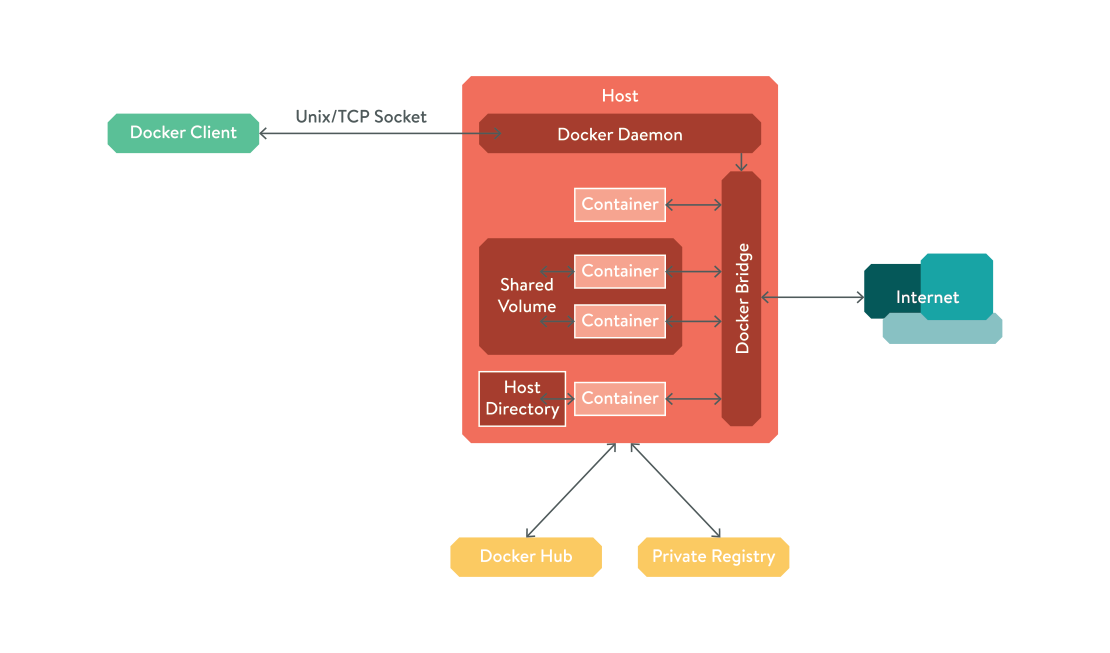

The second socket can easily be assigned and accessible for processes inside the container. srw-rw- 1 root docker 0 Jan 16 22:52 docker.sock another socket! And another process may be the owner of the socket. The endpoints can be by example the socket type of SOCK_STREAM. It created two bidirectional pipes (byte streams) and transfer data between them.

It is available in most Linux distributions by default. The solution to our problem is a small application – socat. If we bind the socket to the container it won’t be accessible because of the ownersip and permission mismatch The socat The first column is the user ID – on my system it is 231072. The process running in the container from the host perspective is a non-root process if we use the user namespaces 231072 512 0.0 1.4 20888 13856 ? Ss Jan16 0:16 /usr/bin/python2 /usr/bin/supervisord The Docker socket permissions in such case should look like that srw-rw- 1 root docker 0 Jan 16 22:52 docker.sock Using the user namespaces we face the situation where the dockerd process (the Docker Engine) is run as root while the containers itself uses non-root PID. The owner of the socket is the process creating it. To make it, even more, simpler think of the socket as of the file on the filesystem which you read from and write to sequences of bytes. To make it simpler, in this case, think of it as of TCP connections, but instead of connecting to IP and port you connect to a socket on the host. Unix socket is a special handler that allows applications to communicate. But there is an easy workaround for this problem Namespaces and containers It make the host socket inaccessible for the processes inside the container. The problem is the socket on the hosts is owned by the root, while the root PID from inside of your container is remapped to non-root PID on the host. It is required if you run Docker inside of the Docker container or you deploy a tool that will manage your Docker hosts or Docker Swarm cluster. In some cases you may need to access the host resource from the container like the Docker own socket. User namespaces provides the mechanism of remapping container resources to host resources limiting container access to the host system. The namespaces makes the process run on the host thinks that it has its own access to some global resources like the PIDs. One of the recommended change to improve Docker security is isolation of the containers in user namespace which was introduced in Docker Engine 1.10. Log out and back in to confirm the changes.Nothing is secure by default and Docker is no exception. To solve this issue, add the current user to the Docker group via usermod command: sudo usermod -aG docker Ģ. You need to be able to access the Docker engine without using the sudo command.ġ. Not having the proper user privileges also triggers the error. Sudo chown :docker /your/file/location Method 4: Add Your User to the Docker Group Finally, you can change the file ownership with:.dockerignore file to your current build, thus excluding the files your build can’t access. You can simply remove the files in question by deleting them, but this affects any other builds using the same files.There are several ways to resolve the issue of ownership of used files: If there is a problem with the file ownership, the error report will list out the files that the docker build command cannot access.ģ. sock can start or stop other containers, create images on the host or write to the host file system. The socket appears as the /var/run/docker.

Check the output for each container, keeping an eye out for an “ cannot connect to the Docker daemon” error report. sock is a Unix socket that enables the Docker server-side daemon, dockerd, to communicate with its command-line interface via a REST API.


 0 kommentar(er)
0 kommentar(er)
